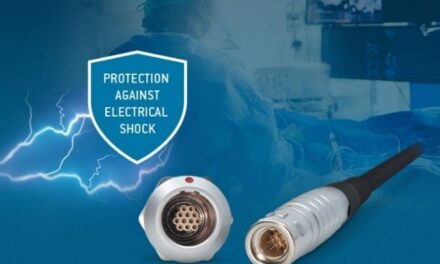 In an interview with Electronics, Dr Martin Kemp, Theme Manager at NanoKTN discusses the hidden power of thermoelectrics and why the UK is well poised to harness both the technological and economic benefits
In an interview with Electronics, Dr Martin Kemp, Theme Manager at NanoKTN discusses the hidden power of thermoelectrics and why the UK is well poised to harness both the technological and economic benefits
Why should the UK invest in thermoelectrics and what role does nanotechnology play?
Thermal energy harvesting and solid state cooling represents a potential global industry worth £1bn but technological challenges have hindered the realisation of this market.
However, nanotechnology offers the potential for new approaches and a paradigm shift in performance through nanomaterials development, nanostructuring, nano- and microelectronic devices and thin film technologies.
The UK has in-depth academic expertise in nanotechnology and is uniquely positioned with leading players over the entire supply chain, required to produce and deploy a new generation of energy systems.
What applications are driving development?
Historically, powering of satellites has been a driver for thermoelectric generator development, while every telecoms laser for fibre optical communications is cooled by a Peltier cooler. Other common applications are portable fridges and water-cooling systems.
The major drive however, is now seen from automotive manufacturers to develop Thermo-Electric-Generators (TEGs) to harvest waste heat from car exhaust systems.
If the technical challenges can be overcome then the potential applications are extremely wide and the potential market would be billions of pounds.
What are the technological benefits ?
The Seebeck effect enables the conversion of waste heat into electrical power. This approach has obvious benefits in situations where direct access to the grid is not possible, for example for the military and/or for remote monitoring or radio-relay stations.
 Energy scavenging will also be important in miniaturised electronic devices such as MEMS, micro-electrical systems and even ‘systems on a chip’.
Energy scavenging will also be important in miniaturised electronic devices such as MEMS, micro-electrical systems and even ‘systems on a chip’.
In remote locations without an electricity grid, thermoelectrics could feature as part of a combined heat and power (CHP) system, and thermoelectric generators could provide sufficient electricity to provide domestic power.
Where is commercial viability being seen?
Transport is currently the main commercial pull for thermoelectric generators. Road transport using internal combustion engines generates a large amount of waste heat – approximately 65 percent is lost as heat to the exhaust gas or coolant in a typical petrol engine. Exploiting this waste energy using thermoelectrics is a key target of many automotive companies since the energy could be supplied to batteries for example in a hybrid drive system or reduce fuel consumption in-line with existing and future regulations.
Could thermoelectric power become a main source of alternative power?
The sun is our main source of energy and each day the earth receives an average of 185W per square meter of solar energy (light and heat), hence harvesting solar radiation in combination with conventional photovoltaics is a real possibility.
The limited supply of fossil hydrocarbon resources and the negative impact of CO2 emissions on the global environment dictate the increasing usage of renewable energy sources.
Thus there is a real requirement for alternative technologies that can offer similar output powers to conventional PV, but in reduced footprints and at significantly lower cost.
Where else is the technology useful?
Electronic devices generate large amounts of waste heat. Laptops and PCs utilise cooling fans, but a Peltier cooling system could be used, or the waste heat harvested to reduce the energy consumption of the device.
Internet servers are now notorious high users of electrical power with concomitant waste heat generated.
Recent advances in active cooling techniques have shown on-chip thermoelectric coolers (TECs) to be very efficient at selectively eliminating small hot-spots. Applying current to a superlattice film deposited between silicon and the heat spreader results in a Peltier effect that spreads the heat and lowers the temperature of the hot- spot significantly.
Why is the UK an ideal market?
The UK has an excellent research base for materials science and engineering applications. Significant activities and University centres of excellence are focussed towards developing ‘clean energy’ technologies.
The UK has world-class research in thermoelectrics but currently a limited manufacturing capability. There are a limited number of UK companies actively involved in manufacturing thermoelectric devices (TEGs); European Thermodynamics and Creactive Design are the main companies involved in thermoelectrics – the former manufacturing TEG devices and the latter interior cooling.
In contrast however, the UK has well developed industries such as the automotive supply chain and OEM base, including Jaguar LandRover, Nissan, Honda, BMW, as well as specialist manufacturers including Aston Martin, Rolls Royce and Bentley.
This industry represents a significant potential end-user, although the disjointed nature between the UK research base and the supply chain needs to be addressed.
What is the way forward for this technology?
The UK is well positioned with leading players over the entire supply chain required to produce and deploy this new generation of energy system. To date, harvesting energy hasn’t had that much attention but now this is changing as people realise a huge amount of heat energy is being lost.
Harvesting energy from wasted heat is both a technical and economic opportunity with the current global market of thermoelectric devices estimated to be around £200m. If the technical challenges can be overcome then the potential applications are extremely wide and the potential market would be many £billions and could help generate highly skilled jobs in science and engineering.
NanoKTN


